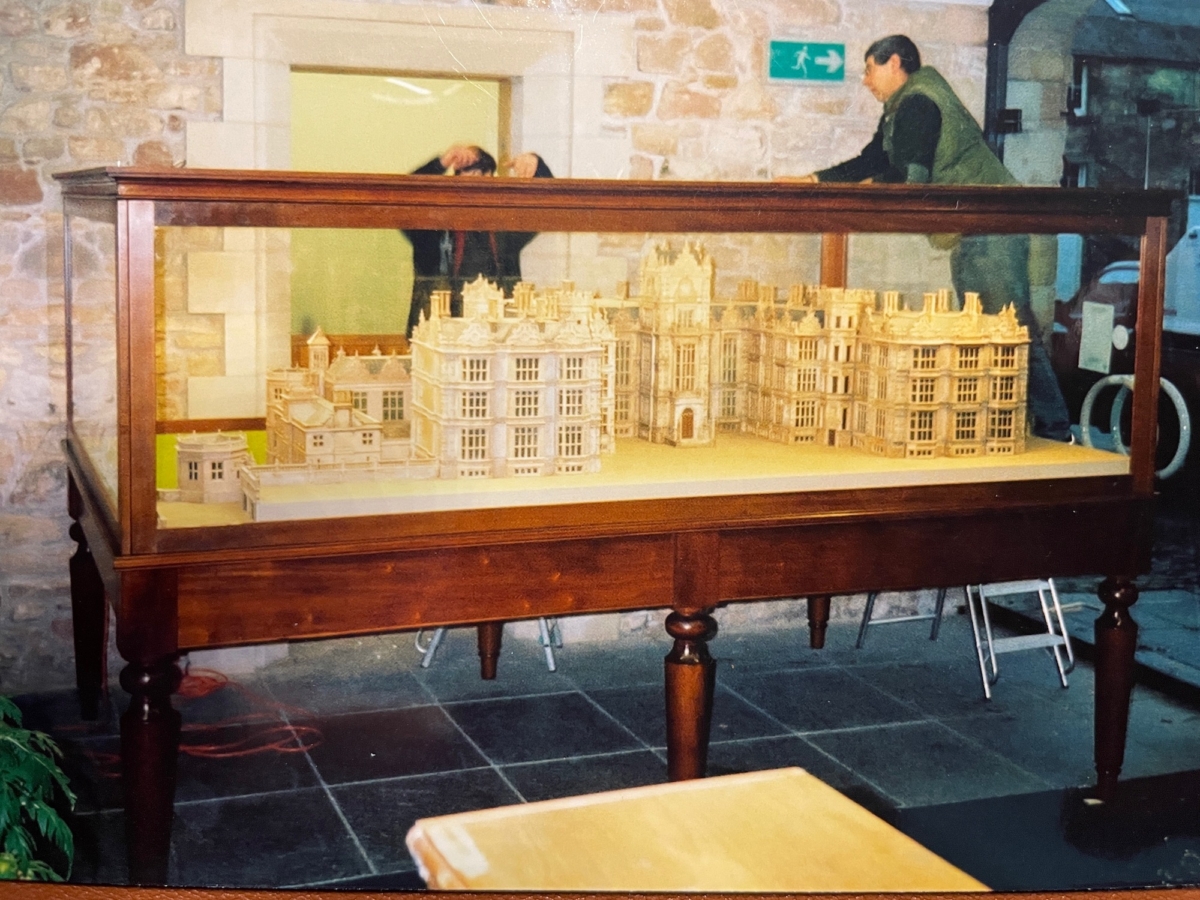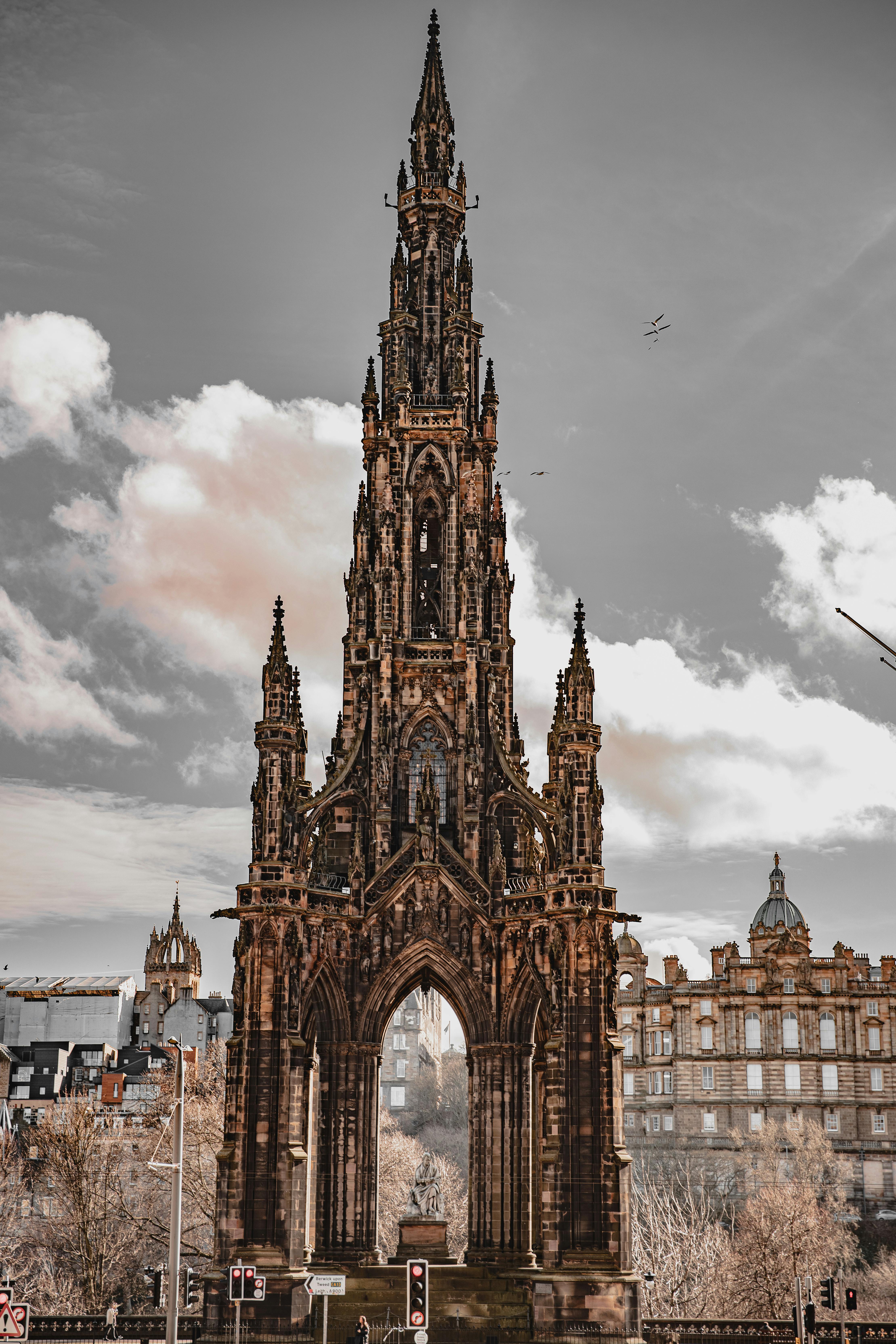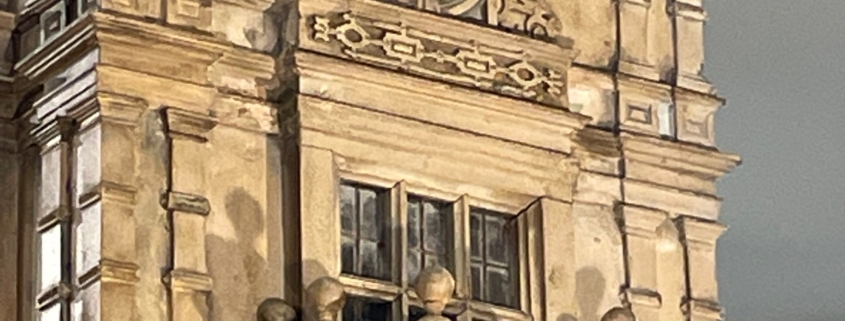Exhibition of the wooden model of Dalkeith Palace
Exhibition of the wooden model of Dalkeith Palace
Restored by Patrick Baxter & team all through the 1990s, the 1830s built wooden model of proposed alterations to Dalkeith Palace is currently on display at Biggar Museum until Sunday 3rd September 2023.

You are encouraged to visit to witness the results of the original skills employed in the manufacture of the model ( and the ensuing restoration of course! )

Free entry to see the model on display and the other exhibits in the special exhibitions room, or a modest charge if you want to see the whole museum – which is much bigger than most people guess. Either way, donations are much welcomed to this small independently financed local museum. We have donated our time and all costs to support the museum, doing considerable further required restoration to the model this year and rejuvenating the display case, as well as supply and set up exhibits showcasing the incredible skills involved in the original manufacture by Biggar-born George Meikle Kemp. Patrick has given numerous private talks and tours, one or two more of which are planned for the rest of the season.
https://tinyurl.com/biggarmuseum
look out for the exhibition sign opposite the Townhead chippy at the north (Edinburgh / East) end of town. Parking outside the museum is free.
George Meikle Kemp was a very unusual and talented individual who pursued his interest in the Gothic style of architecture through travelling the UK and Europe sketching buildings and cathedrals whilst working at his trade, that of joinery. He was a skilled draughtsman and along with his eye for detail and his unique ability with a woodworking plane or chisel, he soon was involved in making wonderful wooden architectural models to better display the designs of the architect he was mainly working for, the celebrated William Burn.

This model, of Burn’s proposed alterations to Dalkeith Palace, was made by him with assistance from his cousin Joseph Mowbray, during 1831-32 in a tenement flat in Stockbridge, Edinburgh. As such it is made in sections which can be dismantled to fit through a standard door. It is the only known model of his of this scale to survive. Burn would have been commissioned by the then Duke of Buccleuch to carry out the works to alter the existing, smaller, simpler Queen Anne design of Dalkeith Palace which dates to the very early 1700s and exists to this day – they never went ahead with the alterations of the main building. A conservatory or orangery was built to much the same design, by Burn, and can not be missed if you take a visit to very popular and excellent Restoration Yard cafe / restaurant / shops in the grounds of Dalkeith Palace. The buildings are formed from the old stable blocks which were adjacent, but not too close to, The Palace and is where we originally set up the model in 2001 after completion of our restoration of the model.
https://www.restorationyard.com/
this picture was myself and one of my team nearing completion of the erection of the model in its case in the stables cafe area in 2001. The case originally made in our workshops was designed to fit in with antiques and was made out of a number of timbers coloured to resemble mahogany. The viewing panels are toughened glass and there was a heavy cornice / latticework roof section with perspex dust panels and electrical lighting. The case measures approximately 3.5m by 2.3m.

Kemp went on to achieve his ambition to become an architect by winning the competition to design the famously gothic Scott Monument on Princes St in Edinburgh. The story is a tragic one though, and the full tale can be learnt at the museum.

A complete life history of Kemp is contained in the book on his life by Morven Leese which is available in the museum shop. An abridged version of the history of Kemp is told around the walls of the exhibition room at Biggar Museum, alongside the model itself, beautifully displayed in the glass and wood case we made for it in 2001, recently itself restored, revamped and modernised to match the museum furniture and better fit into the backdrop of Dalkeith Palace as an eye-catching display when we set it up there in September after the exhibition closes. There should be some opportunities to view it there in the future as Buccleuch Estates and the team overseeing the current redevelopment of The Palace are already holding art and sculpture exhibitions in the building and conducting tours. The building is still a little bare after recently being handed back to Buccleuch use after 2 or 3 decades being leased out to an American university but the amazing ceilings, panelling and architecture, along with some Grinling Gibbons carvings, are all still in good condition.
https://www.dalkeithcountrypark.co.uk/dalkeith-palace/

The exhibition has displays which we set up showcasing the old tools which might have been used, the old and original spare parts made by Kemp and retained to this day, plus some of the new parts made by Patrick Baxter Furniture to complete the restoration – which took 3000 hours approximately through the 1990s, with a further 300 or so over the last year.
There will be some more private tours / interactive talks and discussions for groups and individuals before the exhibition closes in early September – look out for publicity. On these tours there is an opportunity to handle some of the old and new parts which have been retained and see inside some of the tiny pieces to see how they were made, many with actual tiny mortices and tenons and marvel at the standard of craft:

After moving the model to the museum in January 2023 it was realised that a considerable amount more restoration was required, as well as the already planned modernisation and alterations and repairs to the huge display case. A whole series of videos have been made of these works and will soon be made available on youtube etc as soon as the editing has finished. We hope they will be of interest. In the meantime some of the easier to edit videos of Patrick working on repairing the model are on display on the 32″ audio visual display monitor donated by Patrick to the museum and playing on a loop in the exhibition room.






